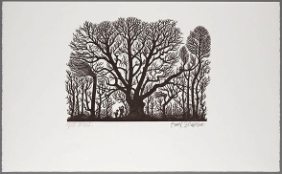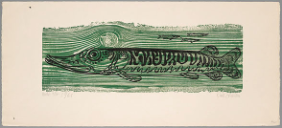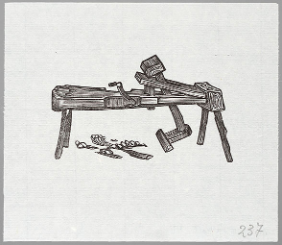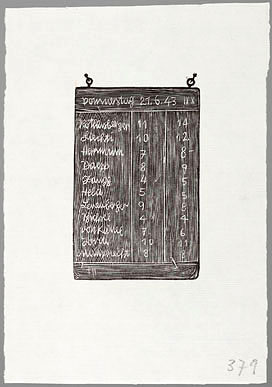During his lifetime, Emil Zbinden was famous for his talent as a wood engraver and illustrator, but also for the social engagement in his works, which often took unexpected forms. The physicality of his images invites us to engage with the subjects depicted.
By David Meszes
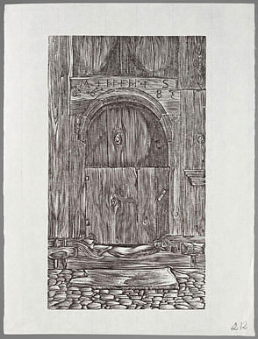
© Samuel Zbinden
Wood engraver Emil Zbinden (1908–1991) dedicated his work to the lives of Switzerland’s “ordinary folk”. Over the course of his career, he used his talent to illustrate trade union publications, political pamphlets and numerous novels, including those by 19th century Bernese writer Albert Bitzius, better known under the pen name Jeremias Gotthelf, who shared Zbinden’s “social conscience”. Opposite is Zbinden’s first engraving, which features in the novel “Uli der Pächter” by Gotthelf (Büchergilde Gutenberg edition, 1943). It takes up a full page at the front of the book before the text and serves as an entrance into the narrative universe: by turning the page, we open the door. The reader is invited to interact with the image and to touch it.
From text to image
On the face of it, there is no immediate link between this image and the text that follows on the next page, as is very often the case with the illustrations Zbinden produced for Gotthelf’s novels. It is fascinating to observe how Zbinden did not think it necessary to illustrate Gotthelf’s exact words, but instead to depict people or objects that we might encounter in this narrative universe. That said, one aspect is pervasive in these images: wood and its texture, which make the reader want to touch the image, thus offering a tactile and acoustic experience of the author’s work, rather than just a visual one. The result is an image that faithfully reproduces the perspective of the characters in the story, based on their sensory experience.
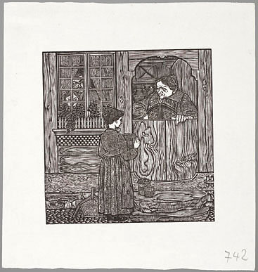
© Samuel Zbinden
Gotthelf also allows us to identify with his protagonists using various narrative techniques, in particular internal focalisation, the thematisation of social problems (such as poverty and rejection), and the use of Swiss-German dialect. Zbinden uses wood as a visual companion in this search for authenticity. The depth of textures he produces gives an unprecedented physicality to a text that already makes the daily lives of ordinary folk palpable to readers.
Wood as medium and motif
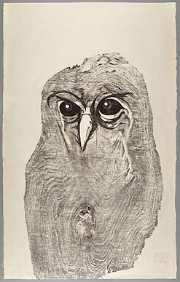
© Samuel Zbinden
We note that wood and trees play a key role in many of Zbinden’s works. They feature at the centre of scenes showing people enjoying themselves, at the heart of real or imagined political debates, or they are used to show the scale of human activities.
Wood is not only a frequent subject in Zbinden’s engravings, it is obviously also the material with which he worked. The creative process is particularly visible in a series of works entitled “Verdingbuben” (foster boys). These full-length portraits show anonymous children employed as labour on farms in Switzerland until the 1960s. To represent them, Zbinden opted to print wooden planks on which the wood grain is visible. The tool for artistic creation is therefore self-referential and becomes a motif in its own right.
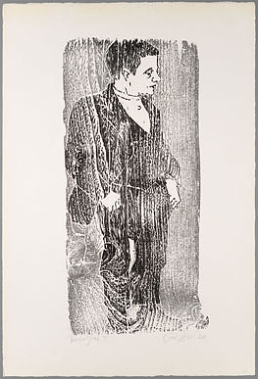
© Samuel Zbinden
In the illustrations produced for the novels by Gotthelf, Zbinden uses the wood grain as a sensory reference point from which readers immerse themselves in the fictional universe. Conversely, the engraved planks from the “Verdingbuben” series are presented in the crudest form, thereby revealing the artificial nature of the image. We are confronted with their physicality and reminded of our position as observers. Before us we see a subject that symbolises the physical nature of real people being treated as exploitable labour. The work is critical in that it presents the portrait subject as a victim of systemic injustice.
In 1949, Emil Zbinden and Eugen Jordi (1894–1983) produced a mural for the Wylergut school in Bern. It featured an illustrated alphabet depicting racialised people for the letters C, I and N. The subjects depicted in this mural were reduced to the status of categorizable objects, reflecting a collective view of the world. The same pair of eyes that condemned with great sensitivity the social injustice suffered by some – such as foster children – failed to notice that its gaze was trapping others in stereotypes. The mural was taken down from the school in 2023 and moved to the Bernisches Historisches Museum.
Following his apprenticeship in typography in Bern, Emil Zbinden (1908–1991) was admitted to the Academy of Fine Arts in Leipzig. It was there that he came into contact with the contemporary art scene, but also with Bruno Dressler, one of the founders of the Büchergilde Gutenberg. This fruitful collaboration gave rise in particular to the illustrations for the novels of Jeremias Gotthelf, which Zbinden worked on from 1936 to 1953. Beyond his commissions, he produced numerous wood engravings and paintings of work site scenes and landscapes. He also became a key member of the artistic collective Xylon.
Bibliography and sources
Last modification 29.11.2023
Contact
Swiss National Library
Prints and Drawings Department
Hallwylstrasse 15
3003
Bern
Switzerland
Phone
+41 58 462 89 71






